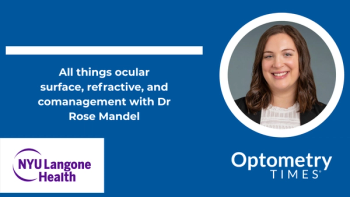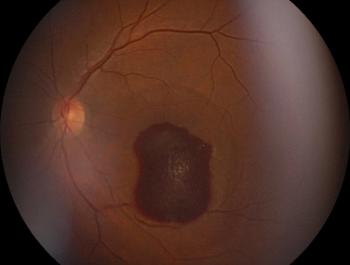
ARVO 2025: Perfuse Therapeutics announces positive results from phase 1/2a trial of PER-001, an intravitreal implant for glaucoma
The first-in-class endothelin antagonist intravitreal implant aided in increasing ocular blood flow and improved both visual function and anatomic structure, according to the company.
Biopharmaceutical company Perfuse Therapeutics has announced positive 24-week results from its phase 1/2a trial of PER-001, a first-in-class endothelin antagonist intravitreal implant for glaucoma.1 Data from the completed trial were presented at the Association for Research in Vision and Ophthalmology (ARVO) meeting earlier this week, according to a news release.
“Our mission is to develop the first disease-modifying treatment for glaucoma, the leading cause of irreversible global blindness with no approved therapies,” said Sevgi Gurkan, MD, CEO and founder of Perfuse Therapeutics, in the release. “These data are very promising, with PER-001 improving vision in glaucoma patients. We plan to advance the clinical development of PER-001, with initiation of an adaptive phase 2b trial in glaucoma in the second half of 2025 that we believe could serve as one of 2 pivotal studies required for registration.”
The phase 1/2a clinical trial was a multicenter, 2-part trial that assessed the safety and tolerability of the PER-001 intravitreal implant in patients with glaucoma. Other exploratory objectives of the study included pharmacodynamic (optic nerve head blood flow), functional (visual field), and structural (optical coherence tomography [OCT] retinal nerve fiber layer [RNFL]) effects of PER-001.1
The phase 1 portion of the trial was a first-in-human, open-label, single ascending dose (SAD) study that assessed the safety and tolerability of 2 doses in a single PER-001 administration in 6 patients with advanced glaucoma (n=3 per dose). Phase 2a was a randomized, patient and reading center masked study that evaluated PER-001 low and high doses against sham control in patients with progressive mild-to-moderate glaucoma (n=approximately 8 for each of the low dose, high dose, and sham control groups). Both portions of the study included 33 participants who were followed for 24 weeks after dosing.1
Data from the trial demonstrated that when added to existing standard of care intraocular pressure (IOP) reducing therapies, the single intravitreal administration of PER-001 aided in increasing ocular blood flow and improved both visual function and anatomic structure with registrable outcomes measured by visual field sensitivity and OCT RNFL thickness. Specifically, improvement in visual field mean deviation from baseline was +1.5 and +1.1 decibel (dB) per year at 24 weeks for high dose and low dose, respectively. The increase in RNFL thickness from baseline was +7.7 and +2.4 microns per year for low and high dose, respectively, as measured by OCT at 24 weeks in phase 2a. The study also demonstrated a strong and linear relationship between functional and structural improvements (Pearson Correlation Coefficient = 0.721; P = .0003; R² = 0.52).1
The trial also demonstrated that PER-001 was safe and well-tolerated over the 6-month period. The 2 drug-related adverse events noted were both mild, intermittent, and self-resolved vitreous floaters. No instances of endophthalmitis, intraocular inflammation, uveitis, or retinal vasculitis were reported.1
“For decades, glaucoma treatments have focused on lowering intraocular pressure (IOP). Yet, many patients still experience vision loss and progress to blindness,” said Steven Mansberger, chief of ophthalmology and director of glaucoma services at Legacy Devers Eye Institute, investigator of the study, and presenter of the ARVO presentation, in the release. “What is particularly remarkable is that treatment with PER-001 led to improvements in ocular blood flow, optic nerve structure, and visual function. These findings suggest a potentially transformative approach for the treatment of glaucoma by targeting the endothelin pathway, a well-established mediator of vascular dysfunction in the disease. Notably, this represents the first time endothelin antagonism has been studied in the human eye, marking the potential start of an exciting new era of treatment for patients with glaucoma.”
Reference:
Perfuse Therapeutics announces positive results from the completed phase 1/2a clinical trial of PER-001 intravitreal implant in patients with glaucoma. News release. Perfuse Therapeutics. May 6, 2025. Accessed May 8, 2025.
https://perfusetherapeutics.com/perfuse-therapeutics-announces-positive-results-from-the-completed-phase-1-2a-clinical-trial-of-per-001-intravitreal-implant-in-patients-with-glaucoma/
Newsletter
Want more insights like this? Subscribe to Optometry Times and get clinical pearls and practice tips delivered straight to your inbox.




















































.png)


